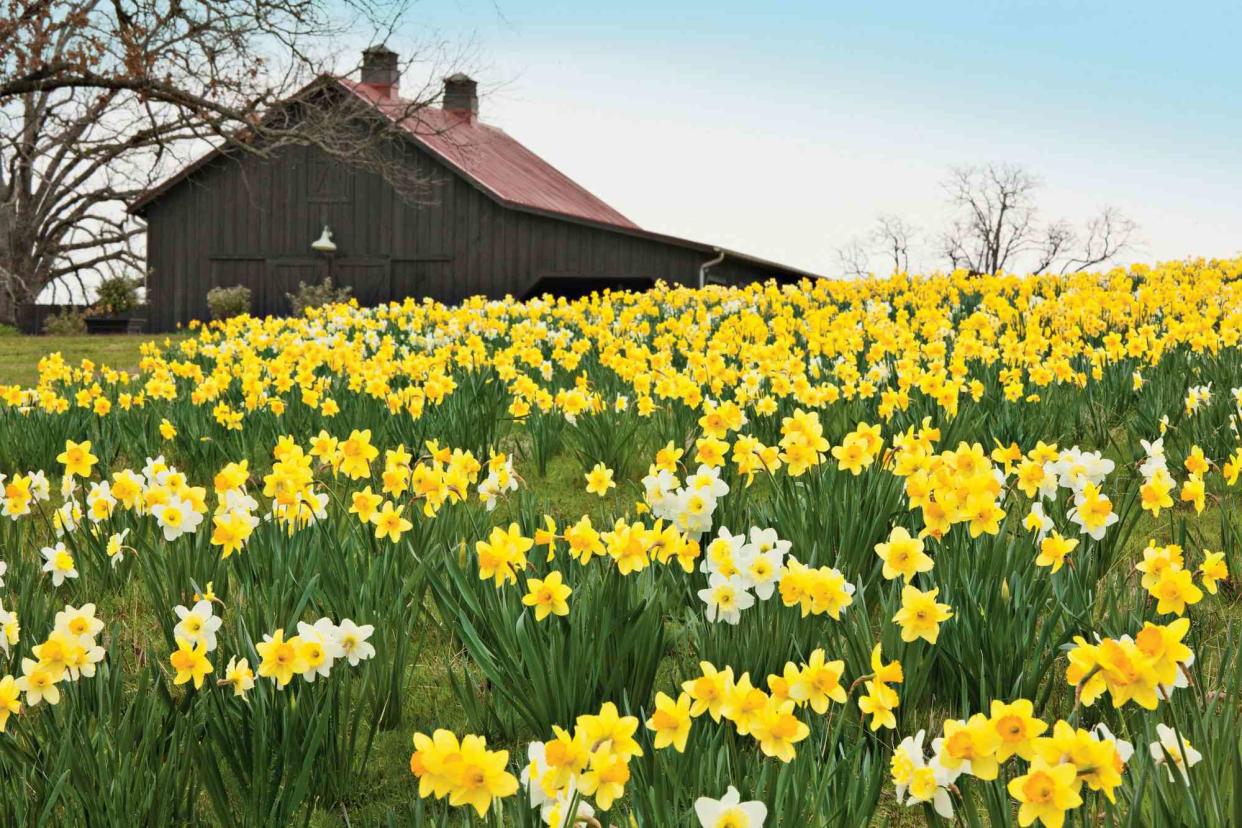6 Reasons Why Your Daffodil Bulbs Aren't Blooming

Art Maripol
Nothing proclaims the arrival of spring like the sunny trumpets of daffodils. So it is disappointing when they don't bloom. You planted them a few years ago, and their leaves are there. Why aren't they flowering?
Too crowded
Daffodils reproduce by dividing and making new bulbs. That's why you often see a slender adolescent bulb attached to a large one when you buy them. But after several years, a single bulb can become an entire colony, with bulbs growing on the shoulders of other ones. None have enough moisture or nutrients to produce a flower bud, however. Solution: Lift and divide them.
Insufficient sun
If planted in the dark recesses of your garden, your daffodils will grow weaker each season until they no longer have the stored energy to develop a flower bud. Solution: Dig them up and move them to a bed where they get about six hours of sunshine each day.
Too warm
If you have had an unusually mild winter or you live in the Deep South where the only sure bet is planting paperwhite narcissus, such as Ziva or Galilee, your bulbs may not have had enough cold weather to break dormancy. Solution: Purchase precooled bulbs, or plant your bulbs in containers where they will be more exposed to any cold weather you get.
Too wet
According to information from daffodil experts Brent and Becky Heath, owners of Brent and Becky's Bulbs, daffodils prefer a dry flowerbed. For the best blooming results, keep them out of the spray of an irrigation system. If their planting area is a little wet, they say it's best to pair them with thirsty companion plants like daylilies or other perennials that will soak up the excess moisture.
In need of a feed
Brent Heath says daffodils need more than standard bonemeal fertilizer to do their best, especially over the long term. He recommends using a specialized daffodil fertilizer, which has extra potassium.
Foliage damage
If the leaves were removed prematurely, either by a late freeze or an impatient gardener, the bulbs cannot replenish their energy reserves for the following season. They may have enough left to grow leaves, but flowering will have to wait until they gain strength. Solution: Fertilize bulb beds from late fall to early spring with a slow-release fertilizer, such as 9-9-6, at the rate recommended on the package. Then let foliage remain until it begins to yellow and flop over.
More Bulb Facts:
The most common reason that daffodils cease flowering is that the bulbs have become too crowded. They need to be lifted, divided, and replanted.
Tulips rarely bloom a second time in most of the South because our weather gets too hot before the foliage has time to mature. Treat them as annuals, and plan to discard them, bulbs and all, after they have flowered.
Don't take shortcuts when you plant your bulbs. Brent Heath says the depth should be three times the size of the bulb.

